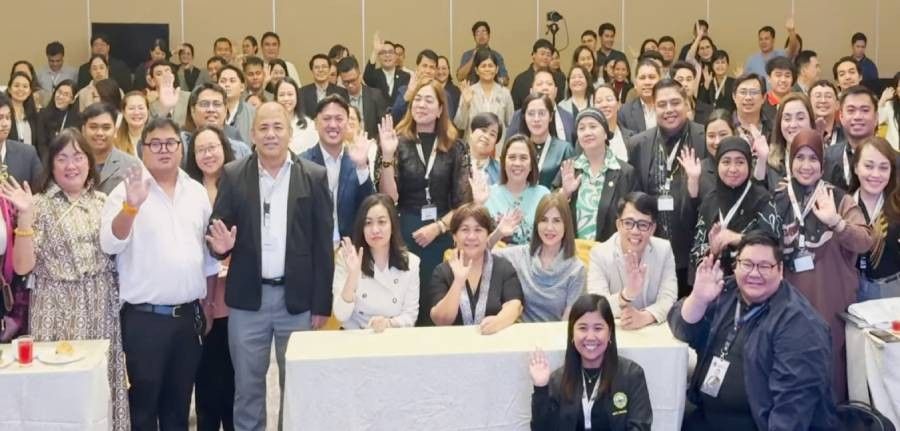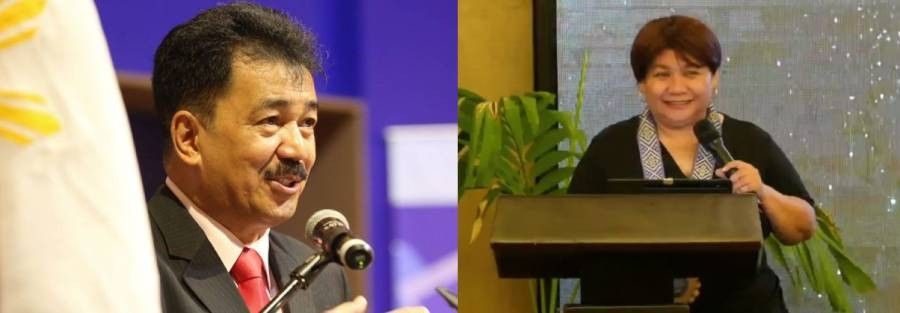How Filipino students are going global without leaving home


A generation ago, global education meant getting on a plane and studying in a foreign land. Today, it might mean logging into a Zoom class, sharing a Google Doc with a student in another country, or joining a cross-border online discussion about climate change.
This is the heartbeat of Collaborative Online International Learning (COIL) and it is changing the way Filipino students experience international education and virtual global classrooms.
At the International COIL Conference 2025, I had the honor of addressing educators, policymakers, and academic leaders who are reimagining the future of higher education in the Philippines. What unites us is not just an academic framework—it is a shared belief in a more inclusive, connected, and purposeful approach to learning.
COIL is not just a method. It is a movement, as CHED Deputy Executive Director and International Affairs Service Head Atty. Lily Freida Milla said in her keynote speech.
“It breaks down walls, amplifies diverse voices, and equips learners with the intercultural competencies needed for a truly interconnected world,” according to Atty. Milla.
And what began as an idea, a dream to link Filipino classrooms to global conversations, has now become a nationally supported digital learning initiative that touches students from Luzon to Mindanao.
Through the Bayanihan COIL Innovation Laboratory (iLab), our higher education institutions (HEIs) are modernizing their approach, reaching students who may never have dreamed of international academic exposure.
Internationalization is one of the core programs of the Commission on Higher Education (CHED) under the leadership of its Chairman, Dr. J. Prospero de Vera III.

Why TikTok, podcasts and Facebook groups are the new classrooms
We must be honest: learning has changed. Information doesn’t just live in books or blackboards. It’s on our phones, our feeds, our livestreams. We learn from content creators, influencers, Facebook groups, and even group conversations.
In this world of constant communication, education in the digital age is no longer confined to a classroom.
But it is not about replacing the classroom—it is about expanding digital learning platforms. Today’s educators are no longer just lecturers. They are mentors, influencers, and multiplatform content producers. They curate knowledge across platforms and, in doing so, connect to learners not just with content, but with meaning.
Why does this matter? Because research tells us that people remember stories twenty-two times more than plain facts. When math is presented through a budgeting story, when chemistry becomes a cooking vlog on TikTok, or when a student livestreams their academic journey, education becomes immersive. It becomes human, relevant, and life-changing.
And the more platforms we use with purpose—whether it’s a Viber group, a podcast, or a radio show—the more we empower young people to not just receive information, but to create and share their own. This is the heart of transformative digital learning in the Philippines.

From rural classrooms to global Zoom rooms: The bayanihan COIL story
In her speech, Atty. Milla reminded us of how far this movement has come.
It began in 2018 when Tarlac Agricultural University and ten other state universities and colleges in the Philippines formed a consortium that became the seedbed of innovation. Their mutual commitment—to complement and collaborate—led to the opening of the first Bayanihan iLab. By 2021, in the middle of the pandemic, this initiative evolved into “Internationalization in the New Normal: Modernizing the iLab,” expanding to fifteen more institutions across the country.
This was not just about upgrading technology. It was about transforming mindsets. “In the spirit of bayanihan,” Atty. Milla said, “this initiative builds a community of practitioners, advocates, and changemakers.” That community now includes universities from Sulu to Antique, from Calapan to Guimaras, all united by a common purpose: to bridge local and global education through innovation, cooperation, and storytelling.
As a veteran broadcaster and media producer, I recognize the value of such a platform. The Bayanihan COIL iLab is a literal and symbolic stage for students, especially those from underserved areas, to develop global citizenship, intercultural communication skills, and digital literacy.
It answers the call for a more equitable and inclusive model of global education. No longer is study abroad the only path to global exposure. Now, a student in South Cotabato can co-design a project with peers in Thailand. A faculty member in Sulu can present case studies in an online conference in Europe.

Digital skills are life skills: Why every Filipino student needs global access
COIL empowers what Atty. Milla called the critical aspects of inclusive internationalization. It strengthens pedagogical innovation, blending synchronous and asynchronous learning modes. It cultivates intercultural communication, digital literacy, and collaborative problem-solving—skills essential to the 21st-century workforce. It also integrates global perspectives into the curriculum, ensuring that every lesson extends far beyond the classroom walls.
And this matters even more in the Philippine context of digital inequality.
We know that more than one-fifth of Filipinos still live below the poverty line. The bitter truth is that many students face barriers: no Wi-Fi, no laptop, and sometimes not even electricity. Yet we have seen time and again that Filipino learners are resilient. They study under streetlights, hike up hills for mobile signal, and cross rivers just to reach a classroom.
In our country, education is the bridge between hardship and hope.
But now, multiplatform communication becomes the amplifier. Through a basic mobile phone, a community radio program, or a downloaded YouTube educational video, learning reaches those the system often leaves behind. It may not be perfect, but it is powerful.


(Bottom) CHED Int’l. Affairs Service -- hard at work for the Intl’l. COIL Conference 2025
The future of education is now: What we must do next
As we look forward, we must ask not just what we teach, but how we empower.
If education is the door, then multiplatform communication is the key. It’s how we unlock global opportunities from local classrooms. But keys don’t turn by themselves! We must invest in infrastructure for rural education. We must also support teachers by training them to use educational technology confidently and by helping them master the art of storytelling for learning. Equally important is ensuring that CHED and our state universities and colleges are equipped to scale digital education innovations already in motion.
At the same time, we need to build stronger partnerships—with the media, with non-government organizations, with tech providers, and with global academic institutions. Most crucially, we must give our students a voice: not just as learners, but as content creators, critical thinkers, and problem-solvers in their own communities.
Atty. Milla put it best when she said COIL ensures that education is not just about mobility for some, but equity for all.
Let us remember: we’re not just teaching subjects—we are preparing Filipino students to thrive in a globalized, digital world. We are helping them tell their stories, see beyond their communities, and dream not just of careers, but of meaningful contributions to society.
Let’s continue this bayanihan! Let’s make sure no Filipino learner is left behind—because when we connect them to the world, we empower them to change it.
---
Follow my social media accounts JingCastaneda: Instagram, Facebook, YouTube, Tiktok and Twitter. Please share your stories or suggest topics at [email protected].
- Latest
- Trending

























